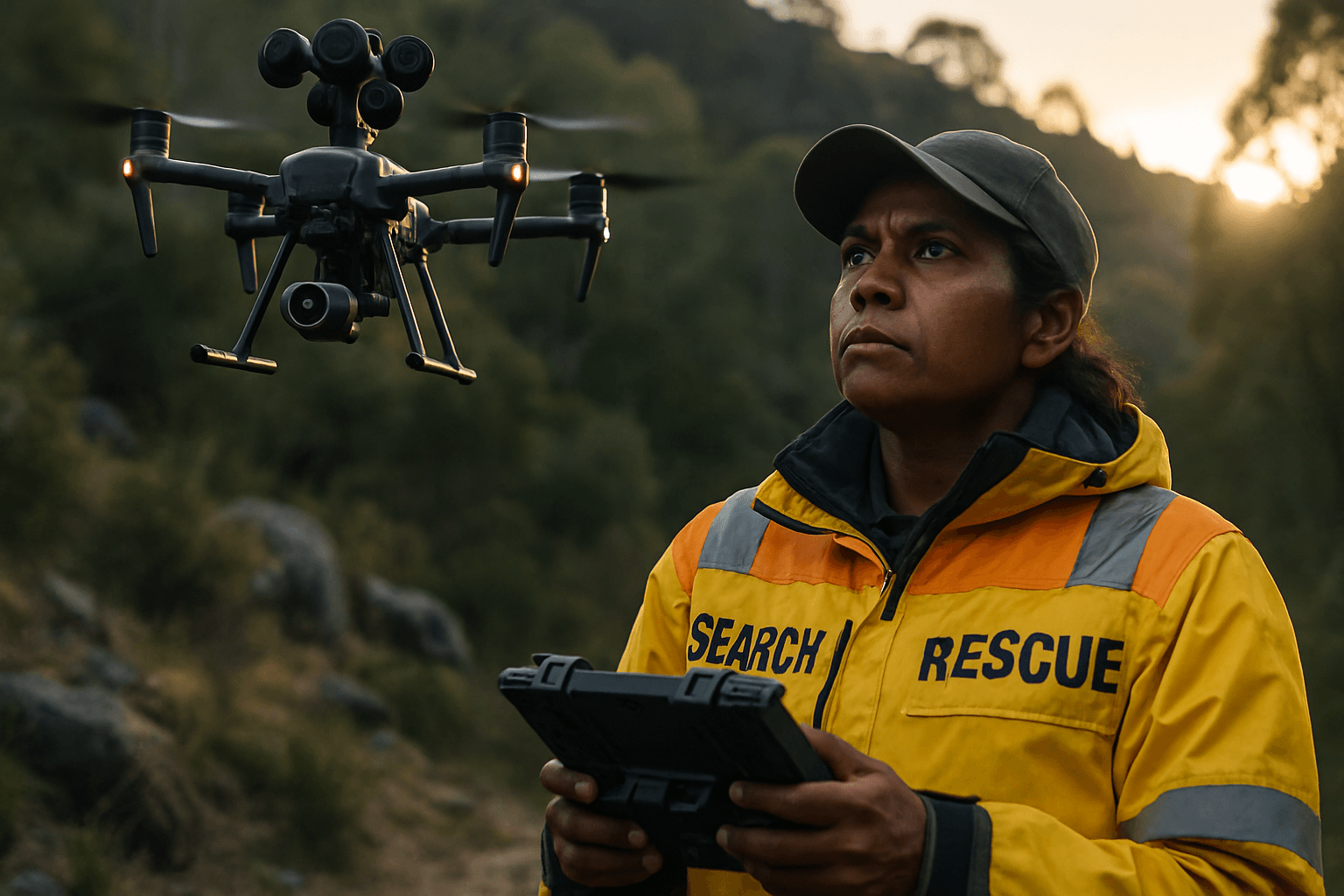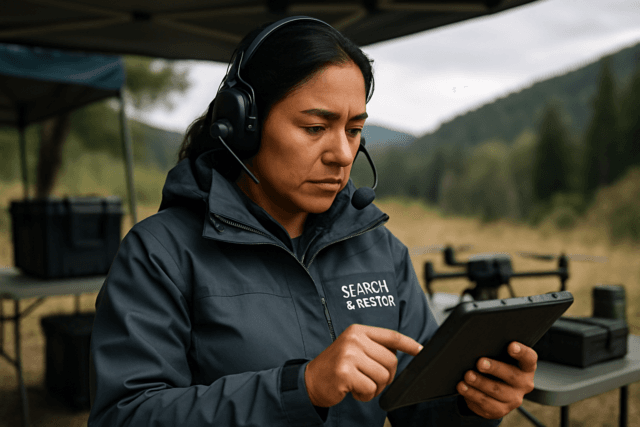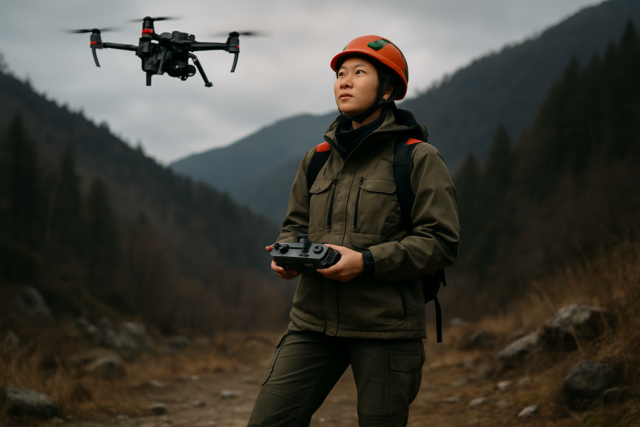In the critical realm of Search and Rescue (SAR) operations, every second counts. While traditional methods often rely on visual cues, many scenarios—such as collapsed structures, dense foliage, or low-visibility conditions—render optical detection insufficient. This is where the innovative application of drone acoustic monitoring comes to the fore, offering a powerful, non-invasive means to locate individuals by detecting subtle sounds of distress. Unmanned Aerial Systems (UAS) equipped with specialized acoustic payloads can dramatically expand the reach and efficiency of rescue teams, providing a crucial auditory layer to the search effort.
The Imperative for Acoustic Monitoring in SAR
Conventional SAR strategies frequently employ drones with electro-optical (EO) and infrared (IR) cameras to survey large areas or hazardous environments. However, these visual sensors have inherent limitations. Victims trapped under debris or obscured by smoke, fog, or darkness often remain invisible to optical systems. Furthermore, in scenarios like underground mines, where direct visual access is impossible, acoustic signals become paramount.
Acoustic monitoring payloads enable drones to “hear” beyond what cameras can see, identifying critical auditory cues such as cries for help, knocking, clapping, or even the distinct sound of an emergency whistle. This capability is particularly vital in situations where individuals might be conscious but unable to move or make themselves visually apparent. By providing real-time auditory data, drone acoustic sensing enhances monitoring and facilitates faster, more accurate decision-making for rescue teams.
Core Acoustic Payload Technologies
The heart of a drone’s acoustic monitoring capability lies in its payload—the specialized equipment carried to perform the sensing task. For SAR operations, these payloads are primarily designed for sensitive sound capture and sophisticated signal processing.
Microphone Arrays for Omnidirectional Listening
The most common and effective acoustic payload for SAR drones is the microphone array. These systems typically comprise multiple Micro-Electro-Mechanical Systems (MEMS) microphones, which are compact, robust, and cost-effective. Arranged in specific geometric patterns, often described as a “crow’s nest array,” these arrays enable the drone to “hear” noises from all directions simultaneously, similar to how human ears process sound. This omnidirectional capability is crucial for pinpointing the origin of distress calls within a wide search area.
Beyond just detection, advanced microphone arrays, combined with sophisticated signal processing techniques like coherent beamforming, can classify detected noises and precisely determine their incoming direction. Some systems may also include a supplementary condenser microphone to cover a broader frequency spectrum, aiding in more precise signal detection and classification.
Integrated Processing Units
To translate raw acoustic data into actionable intelligence, drone acoustic payloads often integrate compact processing units. These units are responsible for:
- Noise Filtering: A significant challenge in drone acoustic monitoring is filtering out ambient noise from the environment (e.g., wind, rescue equipment, birds) and, critically, the drone’s own rotor noise. Advanced algorithms, sometimes leveraging artificial intelligence (AI) trained on databases of various noise signatures, are employed to isolate and identify relevant sounds.
- Sound Source Localization (SSL): Once a potential distress signal is detected, the processing unit uses the microphone array data to triangulate or estimate the precise location of the sound source. This locational data can then be transmitted in real-time to rescue teams, often displayed on a tablet.
- Data Analysis: The system can classify sounds (e.g., human voice, knocking) and potentially even differentiate between different types of human sounds (e.g., screams, whispers), providing richer context to the rescue effort.
Payload Integration and Design Considerations
Integrating acoustic payloads onto UAS platforms requires careful consideration of several factors to ensure optimal performance and operational efficiency.
Size, Weight, and Power (SWaP) Optimization
Drone payloads must be lightweight and compact to maximize flight endurance and operational range. Manufacturers and integrators focus on minimizing the quantity, weight, and size of components. This optimization is crucial for small UAVs, enabling them to carry advanced capabilities without significant weight penalties.
Universal Compatibility and Modularity
Modern payload integration aims for seamless compatibility across a wide range of drone platforms, including fixed-wing, quadcopters, and VTOL (Vertical Take-Off and Landing) drones. Modular designs simplify the process of adding or swapping payloads, allowing rescue teams to configure drones rapidly for specific mission requirements.
Addressing Drone Ego-Noise
The inherent noise generated by a drone’s propellers and motors (ego-noise) presents a primary challenge for acoustic monitoring. This high-energy, time-varying noise can mask the subtle sounds rescuers are trying to detect. Solutions include:
- Hardware Approaches: Suspending microphones beneath the drone body with a wire rope to distance them from the noise source.
- Software Solutions: Employing advanced signal processing techniques, such as beamforming algorithms combined with deep learning neural networks, to identify and effectively filter out drone noise.
- Flight Profiles: Maintaining stable, slow flight speeds can also help reduce noise variability and simplify filtering.
Applications and Advantages in SAR
The deployment of drones with acoustic monitoring payloads offers distinct advantages in various SAR scenarios:
- Locating Trapped Victims: In post-disaster scenarios like earthquakes or building collapses, where victims may be trapped but conscious, acoustic sensors can detect calls for help or tapping sounds, guiding rescuers to precise locations even if victims are not visible.
- Low-Visibility Operations: Unlike optical sensors, acoustic payloads are unhindered by smoke, fog, dense vegetation, or darkness, making them invaluable for night operations or searches in heavily obscured environments.
- Covering Inaccessible Areas: Drones can quickly access and survey dangerous or inaccessible areas, such as damaged infrastructure or remote wilderness, reducing risks to human rescuers.
- Underground and Confined Space Search: In complex environments like underground mines, where visibility is poor and human access is restricted, acoustic drones can navigate corridors and detect human voices, significantly shortening rescue times.
- Non-Invasive Monitoring: Acoustic sensing is a passive detection method, meaning it does not emit signals that could alert or disturb those being sought.
Challenges and Future Outlook
Despite the significant potential, drone acoustic monitoring in SAR faces several challenges that researchers and developers are actively addressing:
- Noise Interference: Beyond drone ego-noise, environmental sounds (e.g., wind, rain, other rescue equipment) can complicate signal detection and interpretation. Advanced noise filtering and classification algorithms are continuously being refined to overcome this.
- Limited Range: The effective range of acoustic sensors can be limited, typically between 300-500 meters, and can be further reduced by background noise, wind direction, and temperature. Decreasing the distance between the drone and the sound source can improve the signal-to-noise ratio.
- Data Interpretation: Extracting actionable insights from complex sound patterns requires sophisticated algorithms and skilled operators trained in acoustic data interpretation. AI and machine learning are playing an increasing role in automating and enhancing this process.
- Regulatory and Privacy Concerns: As with any drone technology, regulatory compliance regarding noise pollution and privacy is a consideration, particularly in populated areas.
The future of drone acoustic monitoring in SAR is promising. Continued advancements in MEMS microphone technology, AI-powered signal processing, and robust payload integration are set to enhance sensitivity, accuracy, and operational efficiency. The integration of acoustic data with other sensor modalities (e.g., visual, thermal, LiDAR) into multi-layered detection systems will create an even more comprehensive and effective toolkit for search and rescue teams, ultimately saving more lives.





